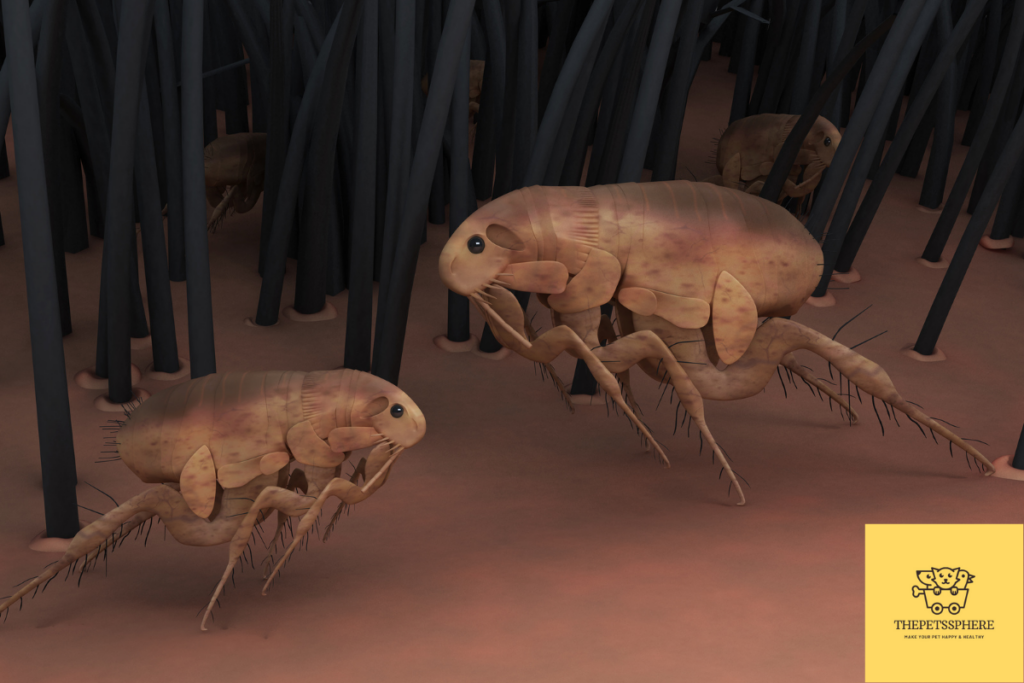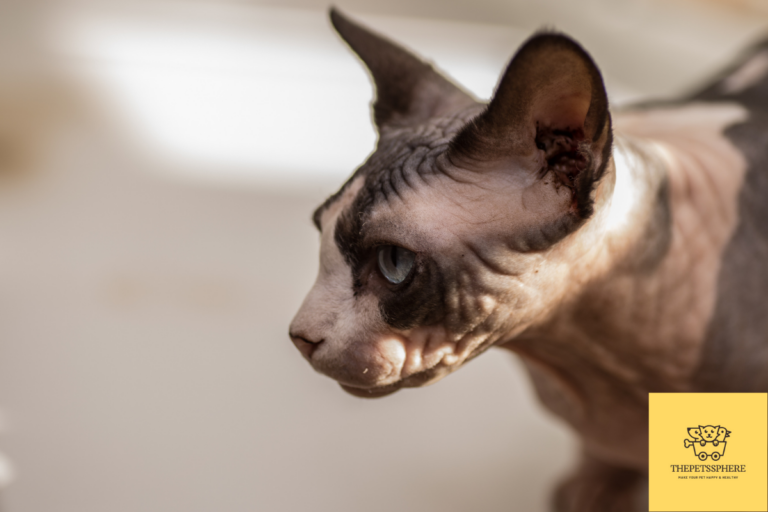Do Sphynx cats get fleas? This is a common question for new Sphynx cat owners. The short answer is, Yes, they do! All breeds of cats are susceptible to fleas and other parasites.
The reason is fleas don’t distinguish between haired or hairless species. All they need is to suck ample amounts of blood to live.
It’s important to be diligent about keeping your pet safe from these pests by regularly grooming them with a comb or brush to remove any stray hairs that may attract fleas.
However, because sphynx do not have fur, it makes them more vulnerable to developing an allergic reaction or having dermatitis from scratching at their skin.
This article talks about how you can remove fleas from your cat so that it is happy and healthy.

About Fleas
Fleas are a common pest that can be found on most animals, including cats. They are small insects that suck blood from the host and lay eggs around the host’s environment. The adult flea lays eggs called nits which hatch into larvae after three days’ time; these larvae mature into pupae, which then turn into adult fleas after a week.
Fleas often cause skin irritation as they bite and feed on an animal, and their bites may lead to hair loss or other health problems if left untreated.
Flea prevention is important for any home with animals because these pests reproduce quickly and can cause serious health issues in both humans and animals alike.
In order to keep your pet safe, it’s recommended you:
- Take them to your vet at least twice a year for checkups.
- Use natural substances like diatomaceous earth in areas where the pets are likely to hide.
- Check yourself for fleas if you’ve been in contact with the animal.
Flea bites can cause irritation on people’s skin but aren’t generally dangerous unless one has an allergic reaction or gets scratched by a host animal.
How do Sphynx Cats Get Fleas?
I had one Sphynx cat, and I’m here to tell you that even if the Sphynx cat is hairless, they still get fleas. There are many reasons for this, but it doesn’t really matter because the end result is still an infestation of little buggers on your furniture and your carpeting.
Your cat may be at risk of getting flea bites if he or she spends time outside, where they could encounter an infected animal, or by going on walks in your neighborhood where stray animals roam about looking for food. Even indoor sphynx cats can still get fleas because these pests can jump from one animal to another.
The best way to prevent fleas from taking over a house with cats is to be diligent about treating all of them regularly with topical treatments like Frontline or Advantage.
How do you Know If your Sphynx Cat Get Fleas?
The Sphynx cat has a unique appearance and personality. This breed is also known for its fastidious grooming habits. For these reasons, some owners may be surprised to learn they have fleas in their homes.
However, there are 3 signs that can help you recognize if your Sphynx cat has fleas:
- If you notice, the scratching behavior becomes worse than usual.
- Excessive licking on themselves or other surfaces.
- The presence of small black spots on your furniture near where your cat spends most of their time.
These are all indicators that fleas might be present in your home environment, so it’s important to take action as soon as possible.
Tips to Remove Fleas from Sphynx Cat
Your sphynx cat has fleas. You know it, and your cat knows it. The only thing left to do is figure out how to get rid of them. Here are some tips that will help you remove these pesky insects from your furry friend:
1) Wash the bedding
Remove all furniture and carpets in the room where the cat sleeps or spends a lot of time (especially near where they sleep).
Flea eggs can live in carpeting and cause a second infestation if not taken care of immediately so it’s important to remove any potential breeding grounds.
Wash the bedding with hot water and detergent, dry on high heat for at least 20 minutes, then vacuum thoroughly.
Clean up any pet hair or litter around the house as well as food dishes – cats often eat flea larvae if there is no other food source available.
2) Vacuum daily
Vacuum regularly using an attachment that can suck up flea eggs.
You can also use an aerosol spray that kills adult fleas – do not use a fogger or other pesticides because this will kill all the other insects in your house, too!
3) Buy a flea comb
A metal comb with very small teeth will be able to catch any smaller fleas on your pet’s body, especially in or around their ears.
4) Use Dawn soap
This inexpensive soap has been shown to kill 98% of all insects when used correctly. Apply it directly onto the skin or use it as an addition to shampoo if your pet has long fur.
5) Get an exterminator
Some areas have laws about spraying pesticides outside the home. If this is the case, then call an exterminator who can do it for you.
If your cat does not have any other health problems and you’ve gone through the above steps to remove fleas, they will be healthy again in no time!
If your pet has fleas and these tips didn’t help get rid of them, please contact a veterinarian or animal hospital to find other options that may work better in your situation.
Tips on How to Prevent Future Fleas at Your Home
Fleas are often a problem for cat owners, no matter how careful they may be. It is possible to prevent future flea infestations at your home by following these simple steps:
- Vacuum the floors with a vacuum cleaner that has been treated with an insecticide such as Nylar or Steri Fab etc.
- Spread diatomaceous earth on hard surfaces in areas where your pet spends time (underneath furniture, near scratching posts).
- Spray carpeting and other furnishings in your home with products containing permethrin or pyrethrum.
- Keep pets off of soft furniture if you spray it with insecticides. While not all of these measures will work for everyone, many people find them helpful.
- You can use “Flea Collars” to prevent future fleas at home. Flea collars do not actually kill fleas, but they do keep them from crawling up the neck and into your pet’s fur better than topical treatments do.
- You can use oral “Flea Prevention Pills”. But you should consult with your vet before offering this to your Sphynx cat. You can buy many flea prevention pills at your local pet store. These do not work in the same way as topical treatments or collars do, but they’re a good option if you are too busy to comb your cat every day.
However, we always recommend you take your vet’s advice first before using any type of pills or medication, etc.
If you’re still concerned about getting rid of any lingering pests in your house, please contact a veterinarian or animal hospital for help while finding an exterminator who can do it legally.
Conclusion
If you have a cat, it’s important to be mindful of fleas. These pesky parasites can hitch a ride on your furry friend and make their way into your home in search of an even more comfortable place to call home.
Luckily, there are ways for you and your pet to get rid of these pests without any hassle or side effects – we hope this blog has given you some helpful tips! What steps will you take next? Let us know in the comment section below!
Good luck removing those pesky bugs from your Sphynx cat and home!

